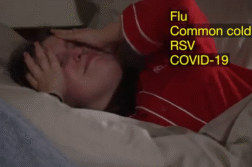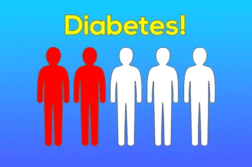ORLANDO, Fla. (Ivanhoe Newswire) — We’ve heard the statistics and the warnings: skin cancer is America’s fastest growing cancer and sun tan beds and salons add to that danger. But lots of folks keep going, and one dermatologist thinks they may actually be addicted to them.
When people expose their skin to the ultraviolet rays found at the beach and in suntan beds, scientists now say there’s a proven reason so many people feel good afterward.
Sancy Leachman, M.D., PhD, Chair of Dermatology at Oregon Health and Science University said “They can lay down and they feel calm. Relaxed. They’ve chilled out. But there’s a biochemical reason for that. And it’s because of the release of these endogenous endorphins and about 10 percent of our population, just like 10 percent in other drugs are very easily addicted to that.”
Dr. Leachman says despite the years of public health warnings, people still deny how dangerous sun tanning can be, especially for young women and men older than 50, who have the highest levels of melanoma in America today.
“I can’t tell you how many young women I’ve had with melanoma or more than one melanoma who have been victims of the sun tan salon trend,” Dr. Leachman told Ivanhoe.
Take all of the breast, prostate, lung, and colon cancers in America and add them together. That total still is less than the number of skin cancers doctors found last year alone.
Here’s another statistic: every hour someone dies from melanoma.
One more little known fact from the skin cancer foundation: cities like Portland and Seattle, usually considered cloudy and rainy much of the year, are among the states with the highest rates of skin cancer in America. Why? Researchers still aren’t sure.
Contributors to this news report include: John Hammarley, Producer; Roque Correa, Editor.
Free weekly e-mail on Medical Breakthroughs from Ivanhoe. To sign up: http://www.ivanhoe.com/ftk
TANNING ADDICTION: DENIAL IS DEADLY
REPORT #2442
BACKGROUND: Melanoma is a form of cancer that begins in the melanocytes, which are specialized cells in the skin that produce the brown pigment known as melanin. The cells darken when exposed to the sun. It can be curable if caught early. The most common type is called cutaneous melanoma, and is developed on the skin mostly in areas where there is more sun exposure. While dark skin lowers the risk of getting melanoma, those with darker skin are still at risk to have melanoma on the palms of the feet and hands. Having a mole can also be a sign of melanoma, although most moles are non-cancerous. Once melanoma spreads, it is known as metastatic melanoma. When melanoma spreads, it will usually appear first in the lymph nodes, and then in other organs such as the liver, lungs or brain. The signs to look out for are spots on the skin and changes in the size, shape, or color of a mole.
(Source: http://www.cancercenter.com/melanoma/symptoms/)
THE STUDY: There is a link between tanning booths and melanoma because of the excessive exposure to ultraviolet (UV) light. Tanning indoors is not a safer way than tanning in the sun. The reason is that indoor tanning gives high levels of UV radiation in a short time. In fact indoor tanning is restricted in some areas, and for minors. It was thought that because tanning beds emit ultraviolet A (UVA) that allows for the body to be tanned without sunburn, that it was deemed safer than the use of other rays like ultraviolet B (UVB). However, UVA penetrates the skin more deeply and can cause further DNA damage and mutation indirectly by making free radicals that cause damage to the skin. Tanners who use modern lamps can have up to 12 more times the exposure of UV rays than those who tan in the sun. However, even with the research of the damage from tanning beds, the FDA states that more than 30 million Americans use tanning devices annually.
(Sources: https://www.cdc.gov/cancer/skin/basic_info/indoor_tanning.htm and http://www.skincancer.org/publications/the-melanoma-letter/winter-2013-vol-31-no-3/link)
NEW REGULATIONS: Studies show that the reason many flock to tanning beds despite the risk, is due for relaxation, mood enhancement, and socialization. Furthermore, tanning addiction is compared to substance abuse as tanners have difficulty quitting. UV light has been proven to release opioid like sensations that relieve pain and generate a feel-good mood. One study found that when comparing the usage of non-UV light to UV light in tanning, participants were more likely to prefer tanning in UV light. To prevent addiction to using tanning beds, research shows that educating youth and adolescents can help people to stay away from tanning beds. Otherwise, to achieve the golden look, self-tanning sprays and creams use non-UV chemicals and are not linked to skin cancer risk.
(Source: http://www.skincancer.org/prevention/tanning/tanning-addiction)
* For More Information, Contact:
Amanda Gibbs
Senior Media Relations Specialist
OHSU / Oregon Health & Science University
(503) 494-8231



